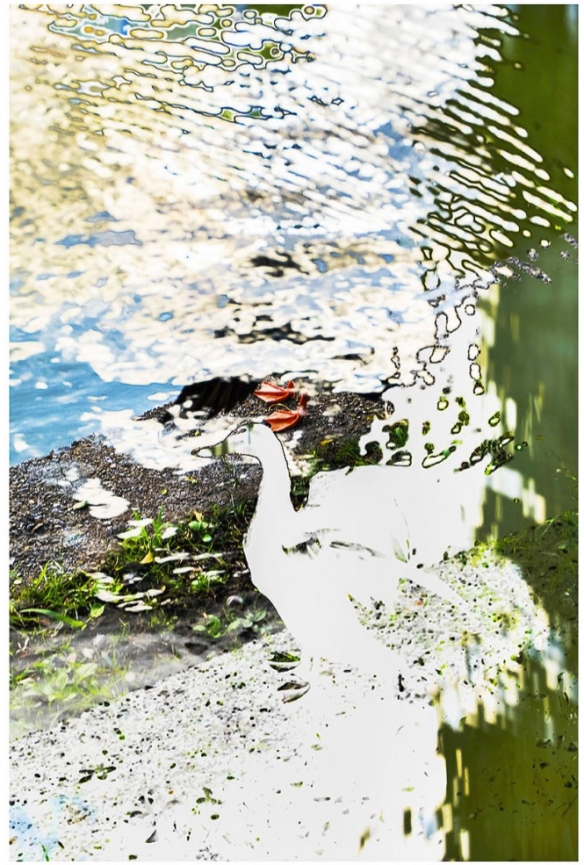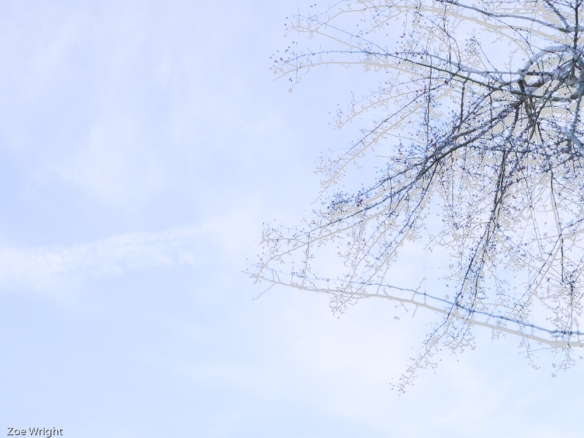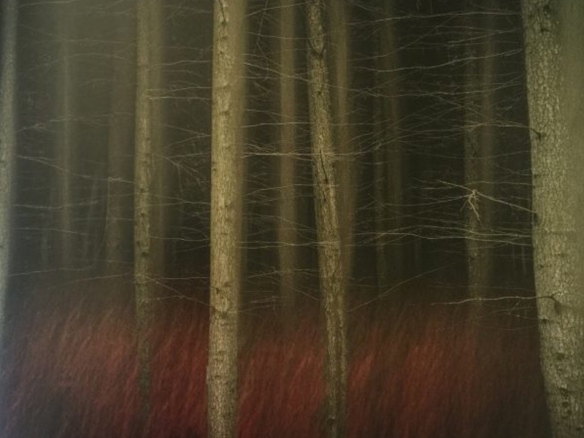22/03/19

© Yoshinori Mitutani
The image of swans is one taken from Mizutani’s HDR Nature. I found the image fascinating, but on showing it to other people there were wildly varying responses ranging from ‘it’s ugly’ to ‘I like the colours and feet, it makes you think’ (Wright, 2019, a) which made me consider it in more detail.
HDR Nature (Mizutani, 2018) is the latest in a series of photobooks by the Japanese photographer Yoshinori Mizutani. Mizutani (born 1987) is one of the new group of Japanese photographers who have moved away from the gritty black and white images, such as those of Moriyama, and Fukase that brought Japanese photography to the public eye (Wright, 2019, b). Mizutani graduated from Tokyo College of Photography and has published six books which, after initial forays into street photography, concentrate of showing his vision of nature and how it has evolved within the increasingly urbanised life in Japan. In an earlier book, Yusurika, he says ‘Nature was always part of my childhood……I moved to Tokyo when I was eighteen, and for almost ten years since then, I sincerely sought nature……. to listen to the words of nature and capture them in photographs’ (Mizutani, 2015).
In HDR Nature Mizutani has used the often-disliked form of HDR photography. HDR images are produced by combining several exposures taken at different settings into one image. It often results in a highly processed image without any depth or subtlety. In this case he used the ‘in-camera’ HDR setting and moved the camera slightly while taking the photographs to produce an image that is more reminiscent of a painting. Mizutani says that he discovered the technique by accident while playing with his camera settings (Feustal, 2019) and that ‘because of the way photos are taken, the final photographs depend entirely on the work of the camera’ (Mizutani, 2018). On attempting to use his technique, I found it was possible to produce similar images to some of his which showed a blurred or duplicated image but, without additional work post-production, could not replicate the effect of a black outline which occurs around parts of several of the images (Wright, 2019, c).

In this book Mizutani has shown more than seventy images. While many of them are individual there are several near duplicates. I am not convinced that this adds to the overall impact and feel that tighter editing of the book might have been beneficial.
One of his images in HDR Nature shows what appears to be two swans. They take central place within the image, but the only parts of the swans that are clearly recognisable are the head of the lower swan and the bright red feet of the swan standing above it. The wings blend into a white mass that is partly the ground and partly the sunshine on the water. The image needs careful examination – are the upper pair of feet a separate swan, or are they a copy of the feet of the other swan, somehow miraculously repeated? Swans mate for life and are often seen in pairs, so there is an automatic assumption that there are two – but are there really? The red feet stand out, they are central and the brightest item within the image. The sudden flash of colour immediately catches your eye. The remainder of the image is unclear, blurred by the technique and the bright light. This concentrates the eye on the feet and the head while allowing imagination to roam freely.
Mizutani was picked as a Foam Talent in 2014 for Tokyo Parrots where Jörg Colbert noted that ‘photography is the art of paying attention to something in order to bring it to somebody else’s attention’ (Colbert, 2014). This year Medde, talking about new talent as exemplified in this year’s Foam Talent show, says ‘younger generations are having lots of fun with photography- more than the previous generations. The work is more playful, yet more conscious in a way’ (Seymour, 2019). Mizutani’s work is undoubtedly ‘playful’, he found the technique while ‘playing around’ and you need a playful imagination to look at the images and enjoy them. He is following in a long photographic history of experimentation starting with the Anna Atkins cyanotypes of botanical specimens. Nature has always held a fascination for photographers, as it has for all types of artists. However, much illustration of nature in European art is very concrete, describing the plants or animals in an accurate fashion to enable recognition of a species. There is an image of swans painted by Thorburn (1860 – 1935) which allows species identification but gives no space for any imaginative storytelling or any emotional content. A single glance is all that is required. Mizutani’s images ask for more work to be done. What is happening? How am I feeling? Why am I feeling that way?

© Valda Bailey
Another photographer who has used a similar technique is Valda Bailey. She also overlays multiple exposures in-camera together with the use of deliberate camera movement. Her book, Fragile, shows a series of landscape images that cover many of the same themes as HDR Nature, but they have a very different feel. She says ‘I am more concerned with portraying an interpretation than a literal representation of what I see before me…. an investigation into how the most fragile elements seem to have their existence challenged …. when set against the strength and solidity of their surroundings’ (Bailey, 2016). While she uses a very similar technique to Mizutani her images are almost the opposite. Bailey’s images are softer and the colours much more subtle. The images are often dark, with small flashes of light. Set against them Mitzutani’s images are brash and bold, highly coloured, utilising large areas of white. I find that both sets of images repay study and enjoy looking at both, however Bailey’s images draw me in further and they are less repetitive. Her images will be the ones I return to over and over.
In conclusion, the word for photography in Japanese is shashin, which literally means copying truth, an exact replica or a reflection of reality. The images in HDR Nature and in Fragile are not exact replicas in the traditional sense, however they give an intense feeling for the subject matter, with enough information to allow identification, while simultaneously allowing your imagination free rein. I find them beautiful, other people have described them as ugly. That does not matter. What does matter is that the images are sufficiently interesting to enable you to engage with them and come to your own decisions.
References
Bailey, V. (2016). Fragile. Triplikite.
Colberg, J. (2014). Tokyo Parrots. FOAM, (39), pp.253-254.
Feustal, M. (2019). HDR Nature. British Journal of Photography, (7878), p.53.
Kerr, A. (1996). Lost Japan. Melbourne: Lonely Planet Publications.
Mizutani, Y. (2015). Yusurika. Tokyo: Amana.
Mizutani, Y. (2018). HDR_NATURE. Tokyo: AMANA.
Seymour, T. (2019). Towards Connectivity. Aesthetica, (86), pp.56-60.
Wright, Z. (2019). Assignment 4 – The Marmite Effect. [online] Context and Narrative. Available at: https://scottishzoecontextandnarrative.wordpress.com/2019/02/05/assignment-4-research-the-marmite-effect/ [Accessed 26 Feb. 2019].
Wright, Z. (2019). Assignment 4 – Japanese Photography. [online] Context and Narrative. Available at: https://scottishzoecontextandnarrative.wordpress.com/2019/01/29/assignment-4-japanese-photography/ [Accessed 26 Feb. 2019].
Wright, Z. (2019). Assignment 4 – Practical Research. [online] Context and Narrative. Available at: https://scottishzoecontextandnarrative.wordpress.com/2019/01/24/assignment-4-research/ [Accessed 26 Feb. 2019].
